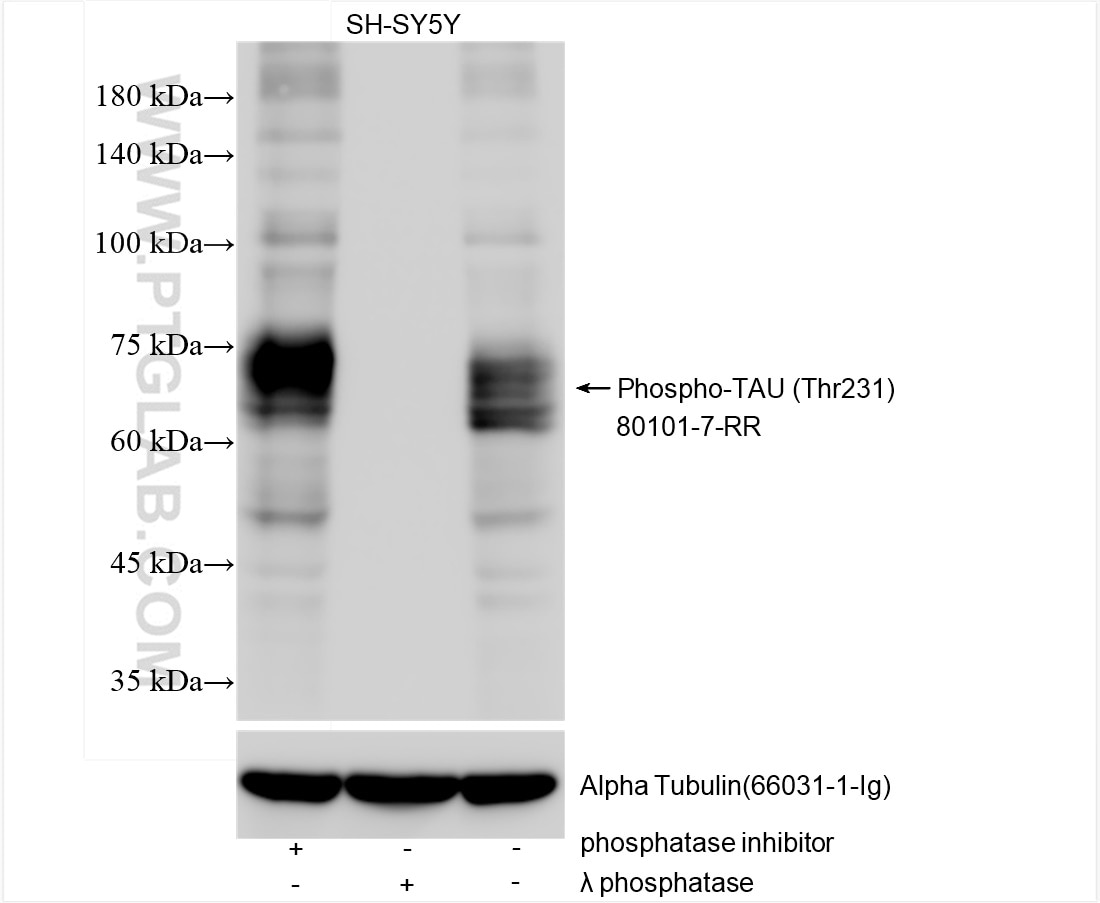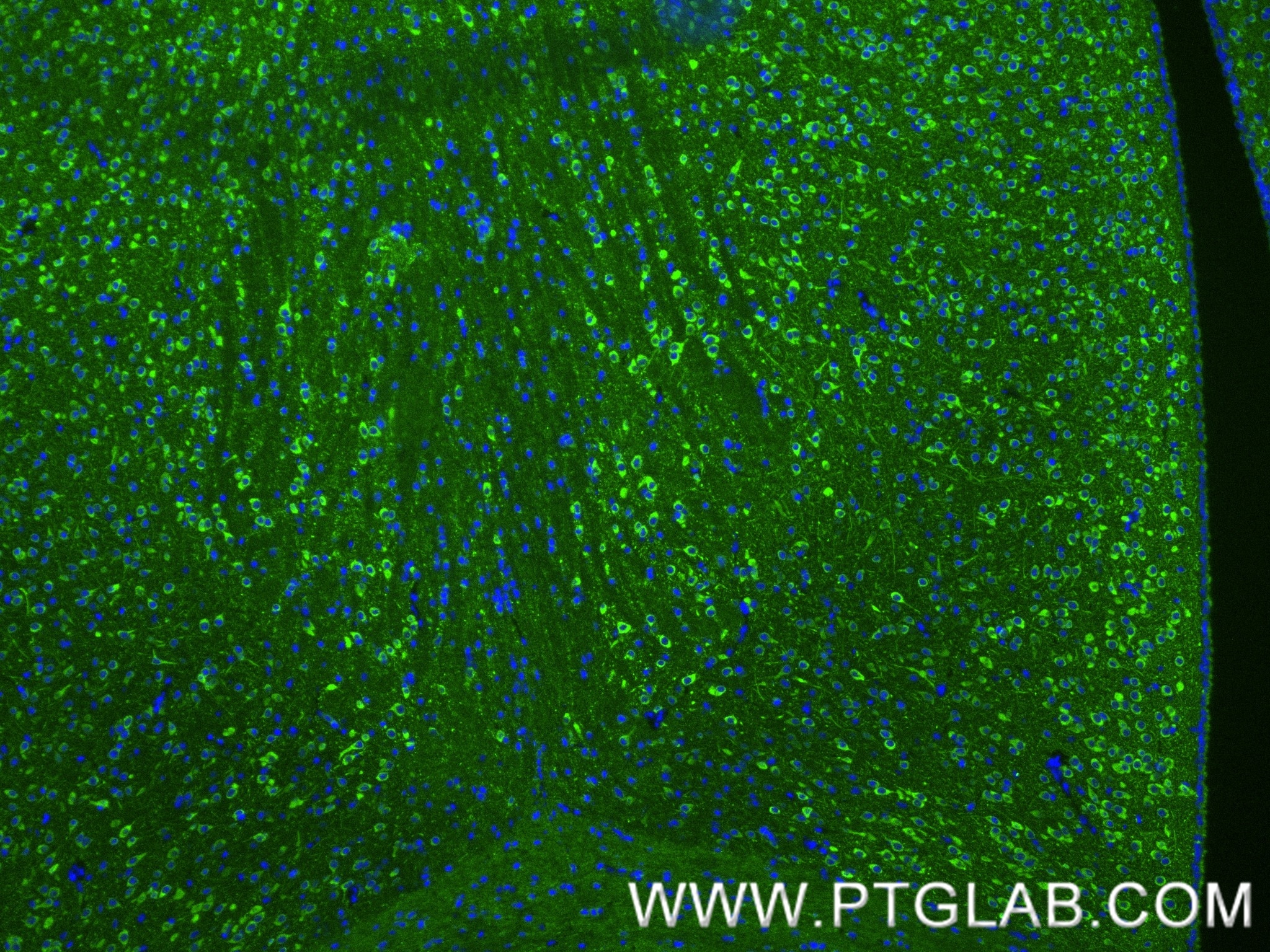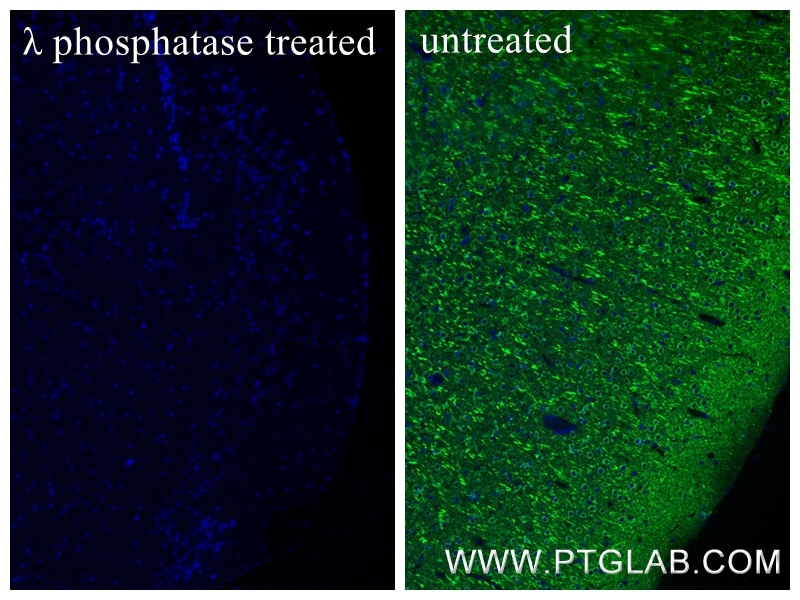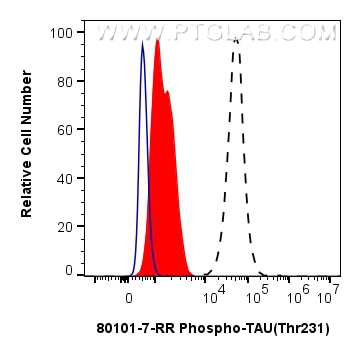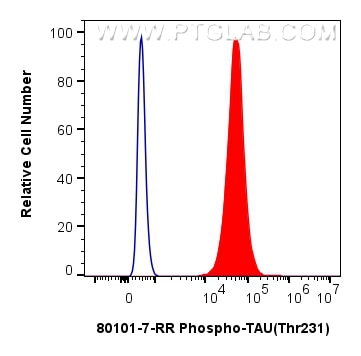Anticorps Recombinant de lapin anti-Phospho-TAU (Thr231)
Phospho-TAU (Thr231) Recombinant Antibody for WB, IF-P, FC (Intra), ELISA
Hôte / Isotype
Lapin / IgG
Réactivité testée
Humain, souris
Applications
WB, IHC, IF-P, FC (Intra), ELISA
Conjugaison
Non conjugué
CloneNo.
240632B1
N° de cat : 80101-7-RR
Synonymes
Galerie de données de validation
Applications testées
| Résultats positifs en WB | cellules SH-SY5Y |
| Résultats positifs en IF-P | tissu cérébral de souris, tissu cérébral de souris |
| Résultats positifs en FC (Intra) | cellules SH-SY5Y, cellules SH-SY5Y |
Dilution recommandée
| Application | Dilution |
|---|---|
| Western Blot (WB) | WB : 1:1000-1:4000 |
| Immunofluorescence (IF)-P | IF-P : 1:250-1:1000 |
| Flow Cytometry (FC) (INTRA) | FC (INTRA) : 0.06 ug per 10^6 cells in a 100 µl suspension |
| It is recommended that this reagent should be titrated in each testing system to obtain optimal results. | |
| Sample-dependent, check data in validation data gallery | |
Applications publiées
| IHC | See 1 publications below |
Informations sur le produit
80101-7-RR cible Phospho-TAU (Thr231) dans les applications de WB, IHC, IF-P, FC (Intra), ELISA et montre une réactivité avec des échantillons Humain, souris
| Réactivité | Humain, souris |
| Réactivité citée | souris |
| Hôte / Isotype | Lapin / IgG |
| Clonalité | Recombinant |
| Type | Anticorps |
| Immunogène | Peptide |
| Nom complet | microtubule-associated protein tau |
| Masse moléculaire calculée | 37-46, 79-81 kDa |
| Poids moléculaire observé | 50-80 kDa |
| Numéro d’acquisition GenBank | BC000558 |
| Symbole du gène | TAU |
| Identification du gène (NCBI) | 4137 |
| Conjugaison | Non conjugué |
| Forme | Liquide |
| Méthode de purification | Protein A purfication |
| Tampon de stockage | PBS with 0.02% sodium azide and 50% glycerol |
| Conditions de stockage | Stocker à -20°C. Stable pendant un an après l'expédition. L'aliquotage n'est pas nécessaire pour le stockage à -20oC Les 20ul contiennent 0,1% de BSA. |
Informations générales
Tau (tubulin-associated unit) is a microtubule-associated protein (also known as MAPT), expressed mainly in neurons of the central nervous system. Its primary function is to modulate microtubule dynamics for maintaining axonal cytoskeleton. The Tau protein has six isoforms produced from a single gene through alternative RNA splicing. Isoforms differ in number of inserts at the N-terminal half and the number of repeats at the C-terminal half (3 repeat-3R; 4 repeat-4R). Tau is hyperphosphorylated during aging and in age-related neurodegenerative diseases such as Alzheimer's disease (AD) and fronto-temporal dementia. Hyperphosphorylation of Tau leads to the formation of neurofibrillary tangles (NFT) in the neurons and glia cells, which is one of the hallmarks of AD.
Protocole
| Product Specific Protocols | |
|---|---|
| WB protocol for Phospho-TAU (Thr231) antibody 80101-7-RR | Download protocol |
| IF protocol for Phospho-TAU (Thr231) antibody 80101-7-RR | Download protocol |
| Standard Protocols | |
|---|---|
| Click here to view our Standard Protocols |
